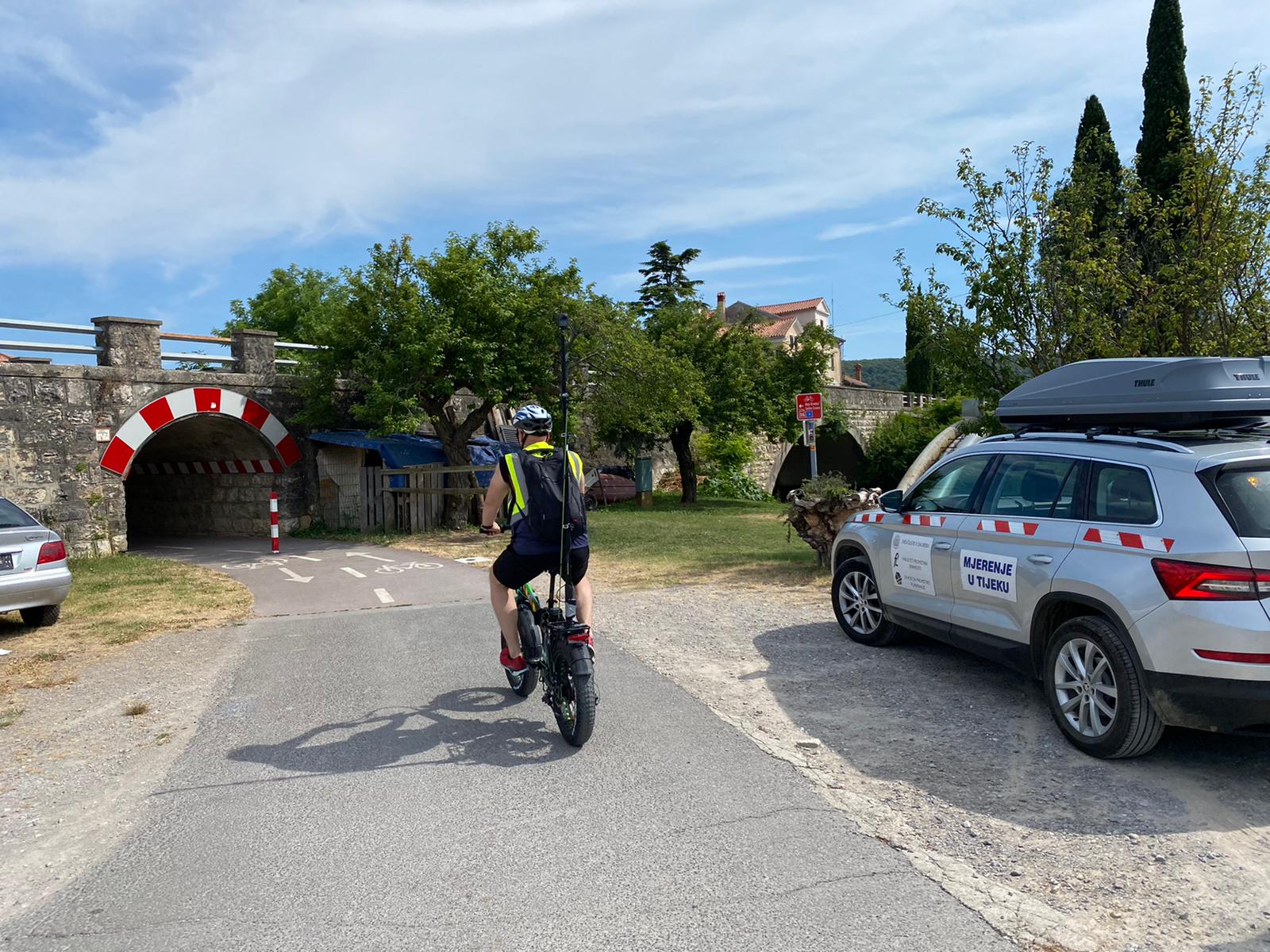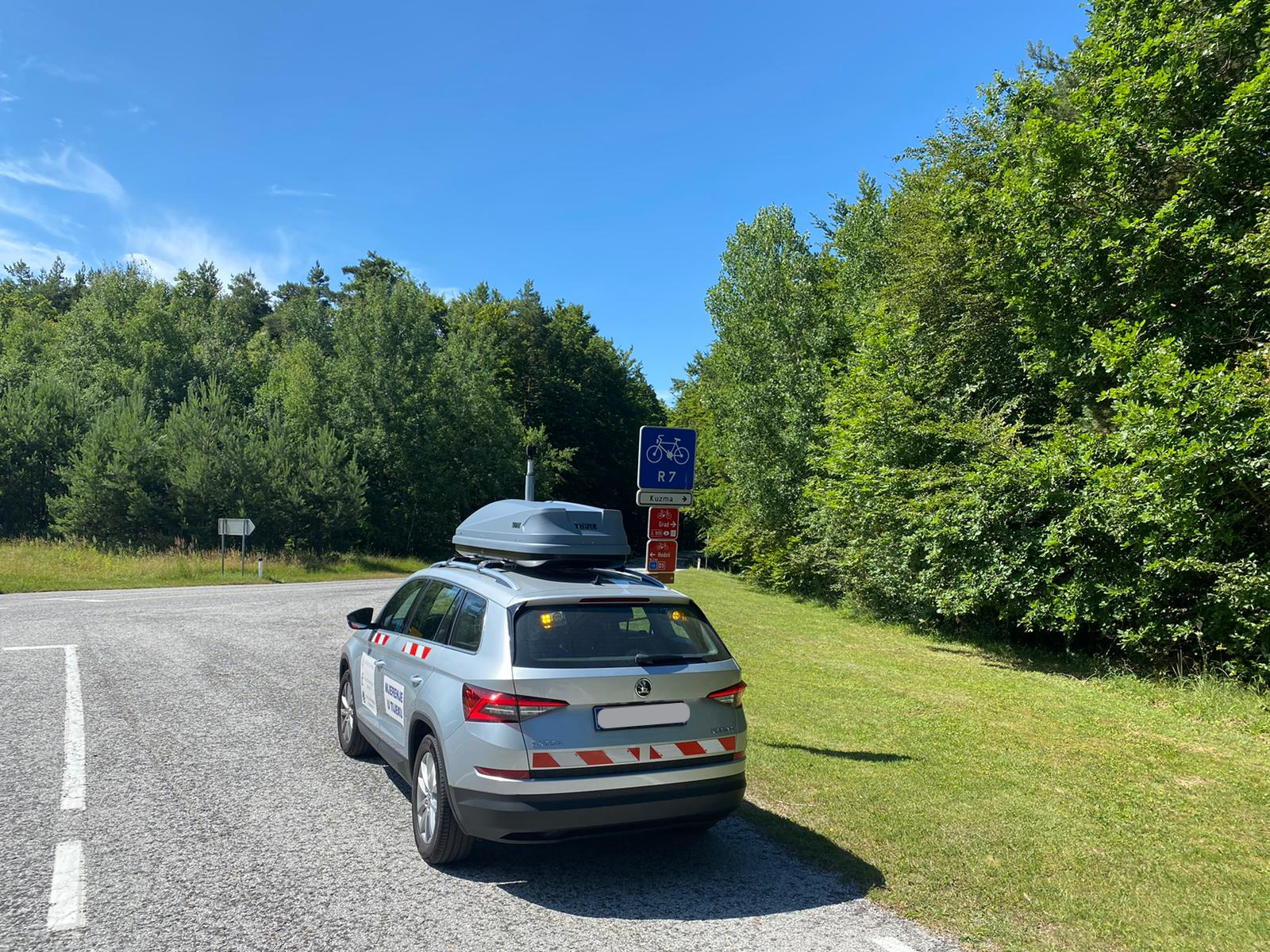SABRINA - SAFETY INSPECTIONS OF BICYCLE ROUTES IN SLOVENIA
19-08-2021
In Slovenia, cycling has always been a popular way of spending one's free time. Due to the Covid-19 pandemic, when the public transport was stopped for a while, more and more people started to use a bicycle for day-to-day errands also outside of the urban centers. However, different research has shown, those people who don't use bicycles often, say the reason is mostly the lack of cycling infrastructure or its insufficient safety.
Safer bicycle infrastructure is at the core of the project SABRINA – Safer Bicycle Routes in Danube Area. The SABRINA project partners focus on the safety aspects of the existing, planned, and missing bicycle corridors crossing nine Danube area countries, included in the project: Austria, Bulgaria, Croatia, Czechia, Moldova, Romania, Slovakia, and Slovenia. One of the initiatives for the SABRINA project were the results of a project SENSoR. In 2014, the results revealed that approximately 80% of roads in 14 countries of Southeastern Europe are very unsafe for cyclists. According to European Road Assessment Programme protocol, the roads were granted just one or two out of a maximum of five stars for safety. With cycling gaining in its popularity, it is becoming evident that cycling infrastructure and its safety in the Danube region need attention. Additionally, better, and safer cycling infrastructure, which is in an early stage of development, especially outside of the major urban areas, will not only attract more people to active mobility and traveling but most importantly prevent serious injuries and fatalities amongst cyclists.

Therefore, the goal of the SABRINA partnership is to provide the decision-makers with resources and tools for safe and sustainable solutions for improved cycling infrastructure in the region. When cycling infrastructure is planned, designed, built, and maintained considering the safety of cyclists, pedaling becomes also a more enjoyable and preferred way of moving – having a positive impact on cyclists’ health, environment, and sustainable development.
The cycling routes implementation is a long-term process where each phase is very important: from planning, designing, and building of the routes to their maintenance later on. To get accurate data about the condition of the EuroVelo cycling routes in Slovenia, the SABRINA project partners from the University of Zagreb, Faculty of Transport and Traffic Sciences visited the country in July. Local partners from the European Institute of Road Assessment (the SABRINA project lead partner) and Municipality Ilirska Bistrica have joined them on the road. The team used specially equipped bicycle and car to film more than 450 km of roads: almost 35 km of EuroVelo (EV) 8 on the Slovenian coast, approximately 65 km of EV 13 in the northeastern part of Slovenia, and more than 350 km of EV 9 crossing Slovenia from Austrian to the Croatian border, and the missing link. Namely, one of the activities of Municipality Ilirska Bistrica, which has a goal to become a cyclists’ friendly place, is to determine the course of the bicycle route missing link between Trieste in Italy and Rijeka in Croatia with local communities and in cooperation with Slovenian EuroVelo coordinator. The analysis of the data from the field route inspections will be included in the report which will be used in the process of new bicycle route implementation in the south-western part of Slovenia. Municipality Ilirska Bistrica in cooperation with other local authorities in the region and with the Directorate of the Republic of Slovenia for Infrastructure is planning to finish the new bicycle route in the upcoming years.
Bicycle routes inspections in the framework of the SABRINA project focus on more than 50 road design features known to influence crash likelihood and severity of injuries of road users and cyclists in the mixed traffic environment. Following the completion of the video-based inspection, each relevant design feature will be inspected and rated according to the existing Road Assessment Programme (RAP) protocols (iRAP and CycleRAP) and European Certification Standard (ECS) developed by the European Cyclists' Federation (ECF). The results, including the iRAP Star Rating of the routes, will show us how safe the routes are for road users and cycling and what could be done to improve the road infrastructure to increase road safety for cyclists.
The Covid-19 pandemic has been a regular topic of conversations for the past year and a half. At the same time, there is another pandemic going on in the world with about 1.3 million people dying in road accidents each year worldwide according to the World Health Organization. The data of the Slovenian Traffic Safety Agency show 80 people lost their lives in 2020 on Slovenian roads (102 people died on the roads in 2019; a country with 2.1 million people). Vulnerable road users, including pedestrians and cyclists, account for almost half of all fatalities. Cyclists are amongst the ones who suffer the most serious injuries in traffic accidents. In Slovenia, as many as 207 were seriously injured in 2020, which is 3% more than the year before.
There are 11 project partners from 9 Danube area countries in the SABRINA project partnership. When inspecting the bicycle routes, we are focusing on EuroVelo routes (no. 6, 8, 9, 11, 13, and 14) crossing the project partners’ countries. First bicycle routes field inspections were done in Croatia. Slovenia was followed by Austria. Stay tuned for more news from other countries.


Photos: Faculty of Transport and Traffic Sciences, University of Zagreb
Some Slovenian media also reported on the activities connected to safety inspections of bicycle routes (all in Slovenian language):
• Radio 94, Daily news, 7 July 2021; listen HERE
• Newspaper Primorske novice, no. 155, page 10, 8 July 2021; article available HERE
• Online portal Primorske novice, 8 July 2021; article available HERE (for subscribers only)
• Online portal Notranjsko primorske Novice, 12 July 2021; article available HERE
• Radiotelevizija Slovenia, Radio Prvi, show ‘Po Sloveniji’, 14 July 2021; listen HERE (from 15:50 to 17:17)
• Printed newsletter Bistriški Odmevi, no. 99, June–July 2021; article available HERE
• Newspaper Notranjsko primorske Novice novice, year VIII, no. 8, page 12, 1 October 2021; article available HERE
![]()



